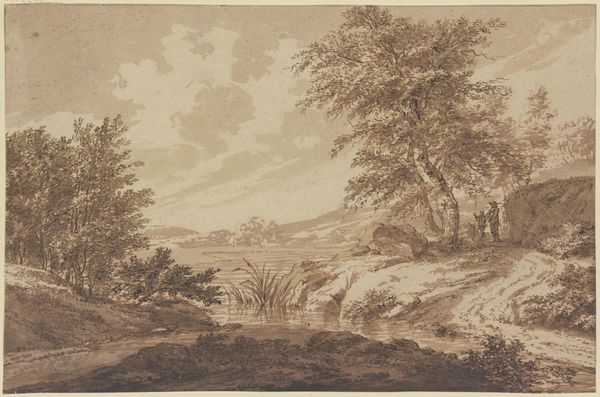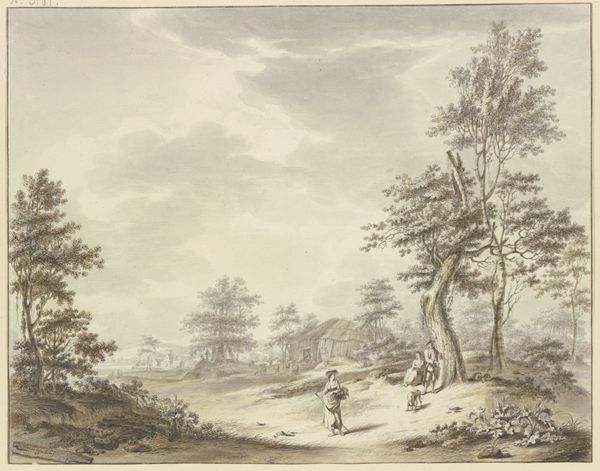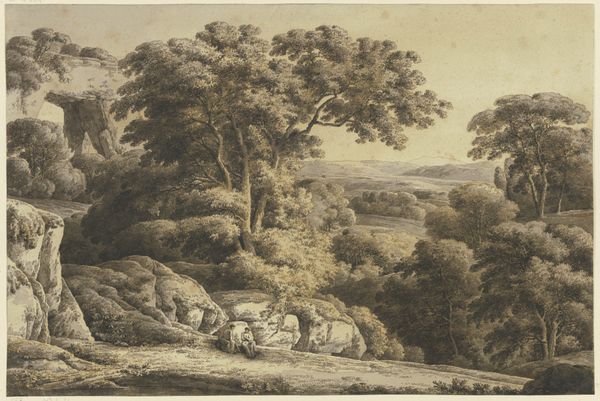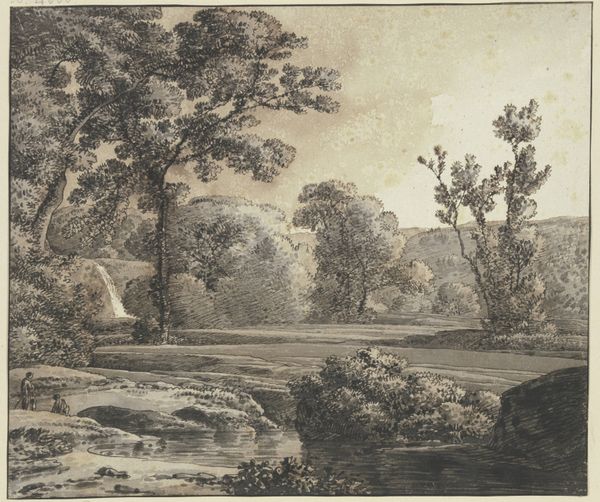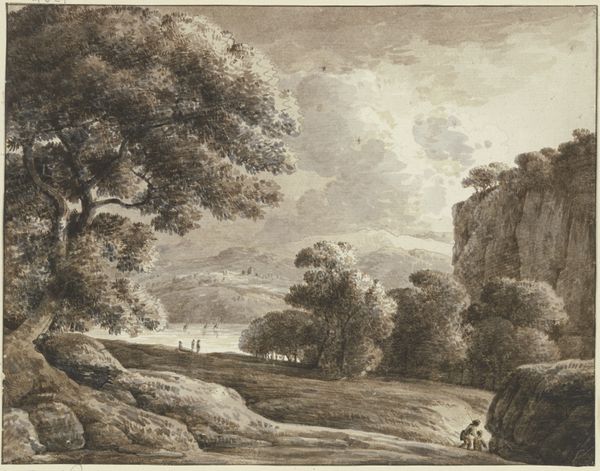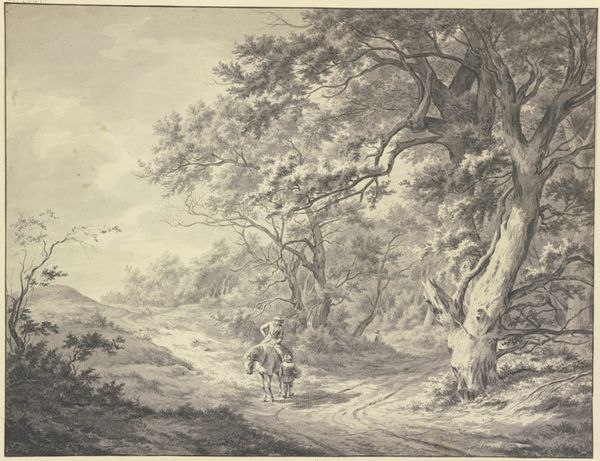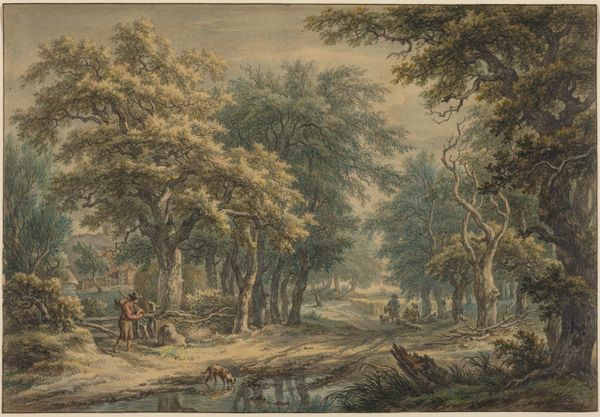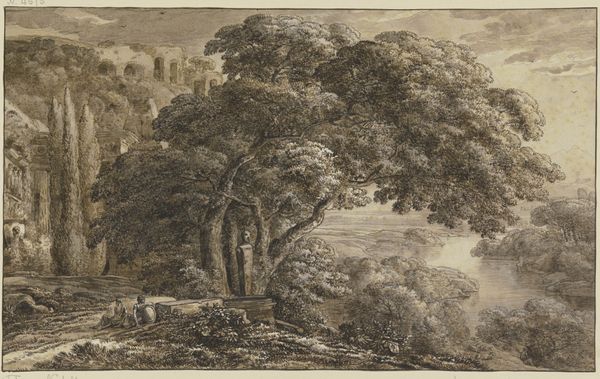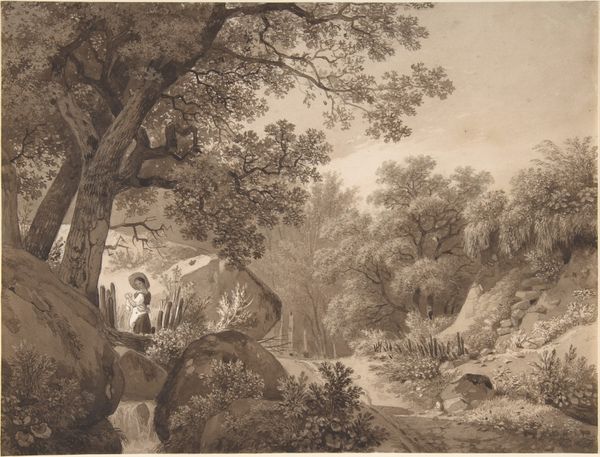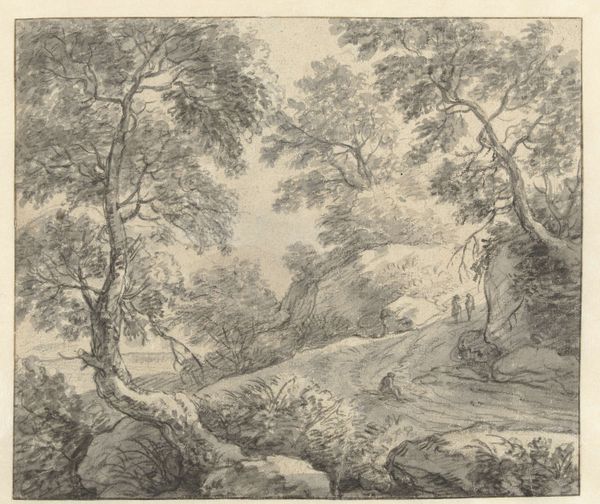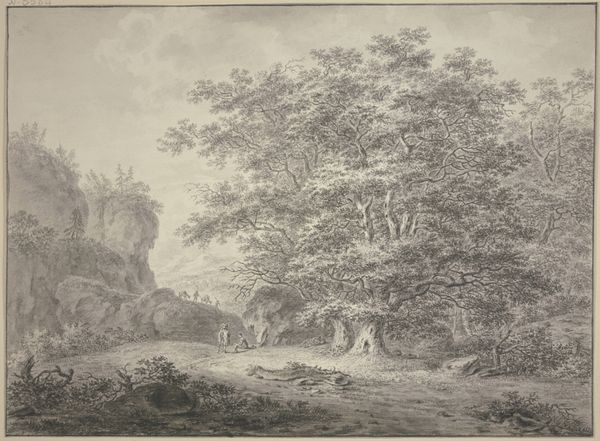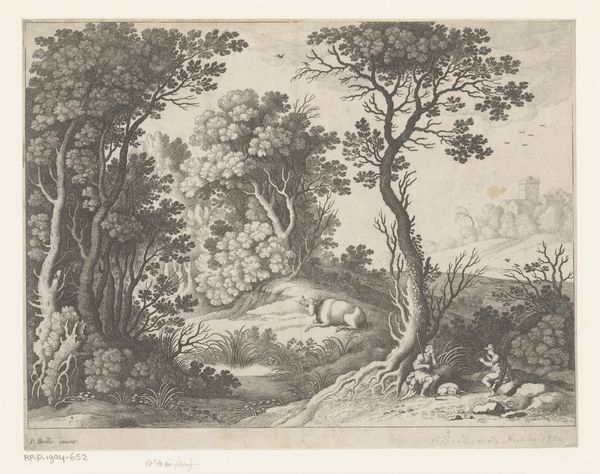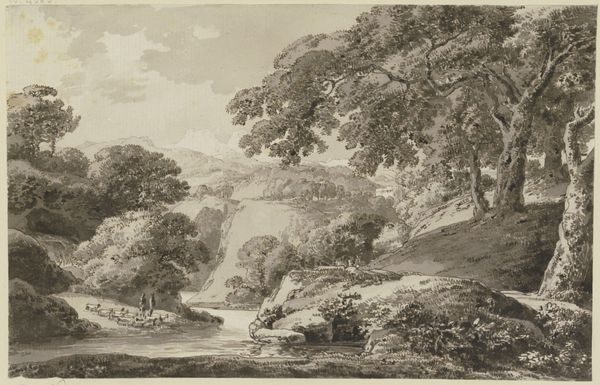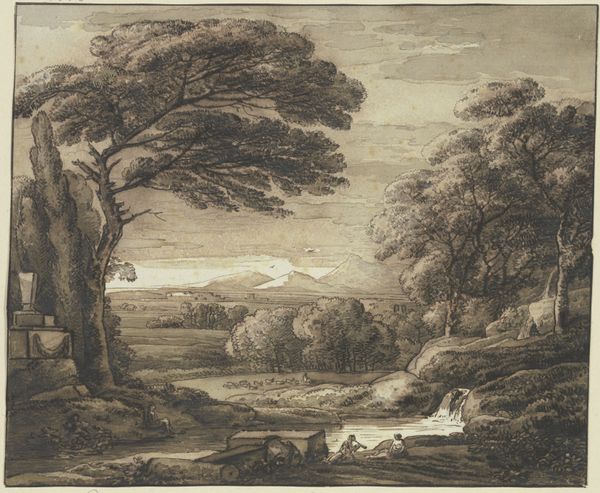
Figures Beside a Waterfall and Pool in a Wooded Landscape 1812
0:00
0:00
drawing, plein-air, watercolor
#
drawing
#
plein-air
#
landscape
#
charcoal drawing
#
figuration
#
watercolor
#
romanticism
#
watercolor
Dimensions: Sheet: 13 3/16 × 19 7/8 in. (33.5 × 50.5 cm)
Copyright: Public Domain
Curator: What a beautifully composed piece. John Varley's "Figures Beside a Waterfall and Pool in a Wooded Landscape," created around 1812, demonstrates the early nineteenth-century fascination with nature and the picturesque. Editor: The light here feels muted, almost melancholic. It is a humble artwork; the materials are clearly paper, watercolor, and perhaps charcoal giving a granular surface quality that captures the roughness of the rocks and trees. It almost feels more like a sketch than a finished piece. Curator: The plein-air approach, so common at the time, suggests the rising importance of direct observation and the experience of nature. This was also a time of immense change; industrial production and access to new consumer markets impacted artistic practices. Did Varley produce these quickly for sale, to satisfy demand? Editor: Possibly. I also wonder about access to these materials. Pigments for watercolors were derived from various sources, many reliant on global trade routes and resource extraction. The shade and intensity relied directly on supply chains which connects it to industrial society. Curator: Good point. And consider the institutional forces. Art societies and galleries were gaining traction, shaping artistic careers. How did venues affect what and how Varley produced, and how audiences were guided to understand and purchase it? Editor: Looking closer, the small figures seem almost like afterthoughts, serving more as scale references, mere markers amidst this depiction of unspoiled nature, emphasizing nature's dominance over humanity. The figures appear as consumers themselves, visitors purchasing an experience. Curator: Or perhaps their presence offers a sense of intimacy, inviting the viewer to imagine themselves within the scene. This tension between human presence and natural grandeur certainly characterized much of the art of this era. Editor: Indeed. Seeing this, it makes me consider the materiality of landscape itself. As it slowly eroded through weather, human industry reshaped those natural formations to meet their needs and vision. In a sense, both materials carry an element of consumption that directly influences the final piece. Curator: I’m left wondering how Varley intended his audiences to reflect on nature as Britain became increasingly industrialized. This piece raises significant questions regarding society, art, and experience during that time. Editor: And I’m left reflecting on how easily the beauty in artwork is disconnected from material history of its very creation. By pulling at threads in the social tapestry, we gain a more full understanding of art and the culture from which it was drawn.
Comments
No comments
Be the first to comment and join the conversation on the ultimate creative platform.
